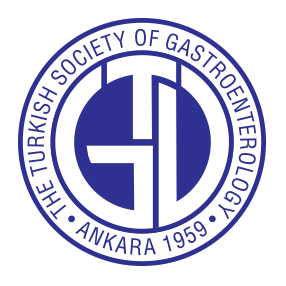Background/Aims: The aim of this study is to reveal the contribution and clinical usability of endosonography in the differential diagno sis of patients presenting with dysphagia.
Materials and Methods: The study included 77 patients with dysphagia. Age, gender, comorbidity, body mass index, history of radiotherapy and chemotherapy, history of trauma, and history of previous head and neck surgery were recorded from the patients’ files. Duration of dysphagia complaints and Eckardt scores were calculated. High-resolution manometry (HRM) and endosonographic ultrasonography (EUS) results were evaluated retrospectively.
Results: Of the patients included in the study, 41 were male and 36 were female. Endosonographic ultrasonography muscularis mucosa, EUS muscularis propria, and EUS total wall thickness values of achalasia patients were found to be higher than those of the healthy control group (P < .05). Eckardt scoring of achalasia patients with IRP (Integrated relaxation pressure) pressure below 20 mmHg was higher than those with integrated relaxation pressure (IRP) pressure above 20 mmHg (P < .05).
Conclusion: In the differential diagnosis of dysphagia, EUS contributed to the diagnosis of HRM in the detection of malignancy. In addition, EUS esophageal wall thicknesses of achalasia patients were found to be significantly higher than those of the healthy group. Manometric examination of patients with increased esophageal wall thickness in patients undergoing EUS in the differential diagnosis of upper gastrointestinal (GI) pathologies will be useful in terms of motility disorder.
Cite this article as: Bayır A, Yorulmaz E, Öğütmen Koç D, Yorulmaz H. Comparison of endoscopic, radiological, and high-resolution manometry findings with endosonographic findings in patients with dysphagia. Turk J Gastroenterol. Published online July 16, 2025. doi: 10.5152/tjg.2025.24573.


_page-0001.jpg)

.png)
.png)